-
BackX
-
Components
-
-
Category
-
Semiconductors
- Diodes
- Thyristors
-
Electro-insulated Modules
- Electro-insulated Modules | VISHAY (IR)
- Electro-insulated Modules | INFINEON (EUPEC)
- Electro-insulated Modules | Semikron
- Electro-insulated Modules | POWEREX
- Electro-insulated Modules | IXYS
- Electro-insulated Modules | POSEICO
- Electro-insulated Modules | ABB
- Electro-insulated Modules | TECHSEM
- Go to the subcategory
- Bridge Rectifiers
-
Transistors
- Transistors | GeneSiC
- SiC MOSFET Modules | Mitsubishi
- SiC MOSFET Modules | STARPOWER
- Module SiC MOSFET ABB’s
- IGBT Modules | MITSUBISHI
- Transistor Modules | MITSUBISHI
- MOSFET Modules | MITSUBISHI
- Transistor Modules | ABB
- IGBT Modules | POWEREX
- IGBT Modules | INFINEON (EUPEC)
- Silicon Carbide (SiC) semiconductor elements
- Go to the subcategory
- Gate Drivers
- Power Blocks
- Go to the subcategory
- Electrical Transducers
-
Passive components (capacitors, resistors, fuses, filters)
- Resistors
-
Fuses
- Miniature Fuses for electronic circuits - ABC & AGC Series
- Tubular Fast-acting Fuses
- Time-delay Fuse Links with GL/GG & AM characteristics
- Ultrafast Fuse Links
- Fast-acting Fuses (British & American standard)
- Fast-acting Fuses (European standard)
- Traction Fuses
- High-voltage Fuse Links
- Go to the subcategory
- Capacitors
- EMI Filters
- Supercapacitors
- Power surge protection
- TEMPEST emission revealing filters
- Go to the subcategory
-
Relays and Contactors
- Relays and Contactors - Theory
- 3-Phase AC Semiconductor Relays
- DC Semiconductor Relays
- Controllers, Control Systems and Accessories
- Soft Starters and Reversible Relays
- Electromechanical Relays
- Contactors
- Rotary Switches
-
Single-Phase AC Semiconductor Relays
- AC ONE PHASE RELAYS 1 series| D2425 | D2450
- One phase semiconductor AC relays CWA and CWD series
- One phase semiconductor AC relays CMRA and CMRD series
- One phase semiconductor AC relays - PS series
- Double and quadruple semiconductor AC relays - D24 D, TD24 Q, H12D48 D series
- One phase semiconductor relays - gn series
- Ckr series single phase solid state relays
- One phase AC semiconductor relays for DIN bus - ERDA I ERAA series
- 150A AC single phase relays
- Rail Mountable Solid State Relays With Integrated Heat Sink - ENDA, ERDA1 / ERAA1 series
- Go to the subcategory
- Single-Phase AC Semiconductor Relays for PCBs
- Interface Relays
- Go to the subcategory
- Cores and Other Inductive Components
- Heatsinks, Varistors, Thermal Protection
- Fans
- Air Conditioning, Accessories for Electrical Cabinets, Coolers
-
Batteries, Chargers, Buffer Power Supplies and Inverters
- Batteries, Chargers - Theoretical Description
- Modular Li-ion Battery Building Blocks, Custom Batteries, BMS
- Batteries
- Battery Chargers and Accessories
- Uninterruptible Power Supply and Buffer Power Supplies
- Inverters and Photovoltaic Equipments
- Energy storage
- Fuel cells
- Lithium-ion batteries
- Go to the subcategory
-
Automatics
- Spiralift Lifts
- Futaba Drone Parts
- Limit Switches, Microswitches
- Sensors, Transducers
-
Infrared Thermometers (Pyrometers)
- IR-TE Series - Water-proof Palm-sized Radiation Thermometer
- IR-TA Series - Handheld Type Radiation Thermometer
- IR-H Series - Handheld Type Radiation Thermometer
- IR-BA Series - High-speed Compact Radiation Thermometer
- IR-FA Series - Fiber Optic Radiation Thermometer
- IR-BZ Series - Compact Infrared Thermometers
- Go to the subcategory
- Counters, Time Relays, Panel Meters
- Industrial Protection Devices
- Light and Sound Signalling
- Thermographic Camera
- LED Displays
- Control Equipments
- Go to the subcategory
-
Cables, Litz wires, Conduits, Flexible connections
- Wires
- Cable feedthroughs and couplers
- Litz wires
- Cables for extreme applications
- Sleevings
-
Braids
- Flat Braids
- Round Braids
- Very Flexible Flat Braids
- Very Flexible Round Braids
- Cylindrical Cooper Braids
- Cylindrical Cooper Braids and Sleevings
- Flexible Earthing Connections
- Galvanized and Stainless Steel Cylindrical Braids
- PCV Insulated Copper Braids (temp. up to 85C)
- Flat Aluminium Braids
- Junction Set - Braids and Tubes
- Go to the subcategory
- Traction Equipment
- Cable Terminals
- Flexible Insulated Busbars
- Flexible Multilayer Busbars
- Cable Duct Systems
- Go to the subcategory
- View all categories
-
Semiconductors
-
-
- Suppliers
-
Applications
- CNC Machine Tools
- DC and AC Drives (Inverters)
- Energetics
- Energy bank
- Equipment and Components for Hazardous Areas [Ex]
- Equipment for Distribution, Control and Telecommunications Cabinets
- HVAC Automation
- Induction Heating
- Industrial Automation
- Industrial Protective Devices
- Machines for Drying and Wood Processing
- Machines for Thermoforming Plastics
- Mining, Metallurgy and Foundry
- Motors and Transformers
- Power Supplies (UPS) and Rectifier Systems
- Printing
- Temperature Measurement and Regulation
- Test and Laboratory Measurements
- Tram and Railway Traction
- Welding Machines
-
Assembly
-
-
Inductors
-
-
Induction devices
-
-
Service
-
- Contact
- Zobacz wszystkie kategorie
How does a converter work?

In the world of electronics, both consumer and industrial, a converter is one of the key components ensuring reliable power supply to devices. In the simplest terms, a converter is a power converter that changes voltage or current type, allowing it to be adapted to the needs of a specific device. This makes it possible to efficiently and safely power electronics, regardless of the energy source.
In practice, converters serve various functions. A DC/DC converter allows the conversion of DC voltage to another DC voltage, e.g. from 12 V to 5 V, which is extremely important for powering portable devices or in industrial automation. Switching converters, using pulse width modulation (PWM), provide high energy efficiency and voltage stability, which is crucial for powering industrial electronics and sensitive devices.
No less important is the role of converters in backup power systems, such as UPS (uninterruptible power supplies), which protect equipment against power outages. Thanks to pure sine wave and modified sine wave converters, devices can receive power of appropriate quality, protecting consumer electronics from damage.
Basic types of converters
Depending on the application, converters can be divided into several main types that differ in their operation and the type of energy they process. Each type has its advantages and limitations, so it’s worth knowing the basic differences before choosing the right solution.
DC/DC converters: step-down (buck) and step-up (boost)
The most common in electronics are DC/DC converters, which are used to change DC voltage. A step-down (buck) converter lowers voltage from a higher level to a lower one, e.g. from 24 V to 12 V, which is useful for powering industrial electronics and portable devices. A step-up (boost) converter works the opposite way – it increases voltage, allowing devices that require higher voltage to be powered from limited energy sources. Both types of DC/DC converters allow for precise voltage adjustment and increased energy efficiency of the system.
Switching converters and pulse width modulation (PWM)
In more advanced systems, switching converters are used, which, thanks to pulse width modulation (PWM), can precisely regulate voltage and current. Such solutions minimize energy losses and increase energy efficiency, which is especially important in backup power and UPS systems. Switching converters can operate as step-down, step-up, or in hybrid modes, adjusting voltage to the needs of the device.
Electromechanical and machine converters
Although increasingly rare in consumer electronics today, electromechanical and machine converters are still used in industrial systems and renewable energy. They operate using moving parts, converting voltage through generators and transformers. They are valued for their simple design and reliability in harsh conditions, e.g. under heavy loads or in systems requiring resistance to surges and overloads.
Voltage converters in practice
In everyday work with electronics, both consumer and industrial, voltage converters play a key role in ensuring stable and safe power supply. Depending on the quality of the current and device requirements, different types of converters are used to adapt voltage, improve stability, and protect equipment from damage.
Pure sine wave and modified sine wave converters
One of the most important criteria when choosing a converter is the shape of the output voltage. A pure sine wave converter supplies alternating current identical to that in the electrical grid, which is essential for the proper operation of sensitive electronic devices. A modified sine wave converter, on the other hand, offers a cheaper solution for less demanding devices, such as simple tools or consumer electronics.
Inverters and their use in UPS systems
Inverters are devices that convert DC to AC, commonly used in UPS systems as well as backup and photovoltaic installations. Thanks to them, it is possible to maintain power continuity during outages, protecting equipment from failures and ensuring voltage stability.
Hybrid and frequency (VFD) converters in industry
In industry, hybrid converters and frequency inverters (VFD) are increasingly used, allowing precise control of electric motor speed, improving energy efficiency, and saving power.
Specialized types of converters
In more demanding industrial applications, flyback, forward, and machine converters are used to ensure stable power under high loads and harsh working conditions. Machine and electromechanical converters are also used in renewable energy, e.g. in wind turbines and small hydroelectric power plants.
Safety and device protection
Modern converters are equipped with protective functions such as overload, overvoltage, short-circuit, overheating, reverse battery connection, and low-voltage protection. These mechanisms ensure voltage stability and the safety of connected devices, which is important both in consumer electronics and in powering portable or industrial electronic equipment.
Practical applications
Converters are used in powering consumer electronics, portable devices, backup systems, and in industry. They allow efficient voltage conversion from batteries, maintain power continuity in UPS and backup systems, and increase energy efficiency in industrial plants. Their versatility and ability to adjust voltage make them an essential element of modern power systems.
Summary
The choice of the right converter should take into account the power type, device requirements, and protective functions. DC/DC, switching, hybrid, or VFD converters enable stable, safe, and efficient powering of consumer electronics, portable devices, backup systems, and industrial electronics, ensuring long equipment life and high energy efficiency.
About DACPOL – comprehensive power solutions
For many years, DACPOL has been supporting customers in powering consumer electronics, portable devices, and industrial systems. Our offer includes DC/DC converters, switching converters, hybrid converters, pure sine wave converters, modified sine wave converters, inverters, and voltage converters, allowing for precise voltage adjustment to device needs and ensuring reliable operation.
We offer solutions for UPS systems (uninterruptible power supplies) that guarantee continuous operation and protect sensitive electronics against overloads, surges, short circuits, or low voltage. This enables safe powering of consumer electronics, portable devices, and professional industrial electronics, even under demanding working conditions.
DACPOL focuses on energy efficiency and energy savings – our solutions help optimize power consumption in industrial and automation systems, reducing operating costs. The offer also includes systems supporting renewable energy, e.g. integration with wind turbines and small hydroelectric power plants, where machine converters and electromechanical converters provide stable AC power conversion.
Our experts assist in selecting the right equipment – from simple DC/DC converters to advanced hybrid, VFD, and inverter systems – and advise on protection and voltage stabilization. By working with DACPOL, you can be sure your power system will be not only reliable but also safe and energy-efficient.
Related products
Related posts
 Thermally conductive materials in power storages
Thermally conductive materials in power storages
 Measuring power and energy in electric circuits
Measuring power and energy in electric circuits
 Industrial communication in explosion hazardous areas (with MTL components)
Industrial communication in explosion hazardous areas (with MTL components)

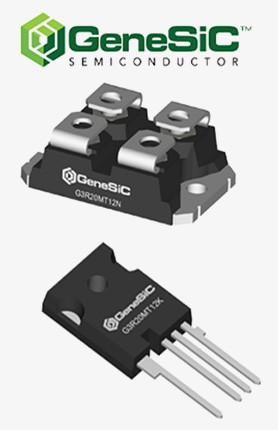
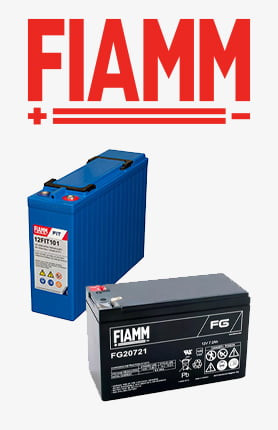
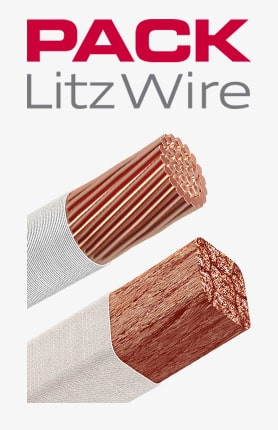
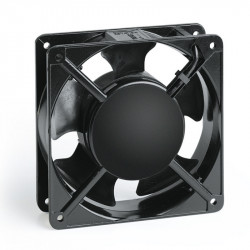
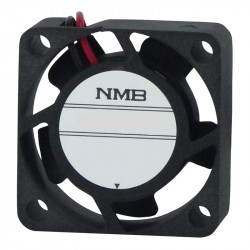
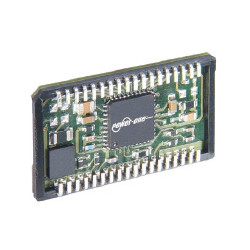
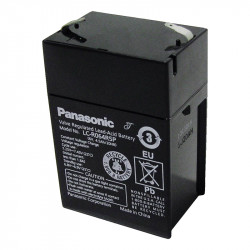
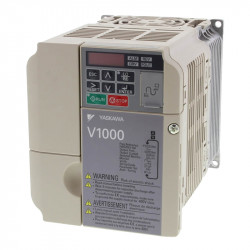
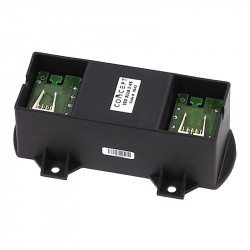
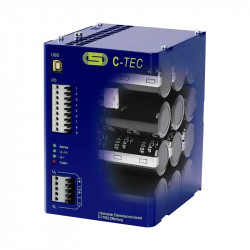
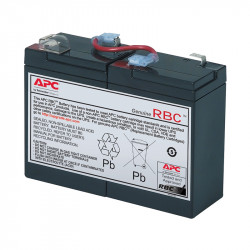
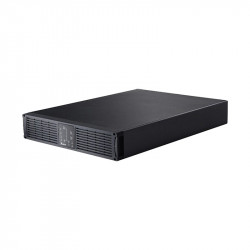
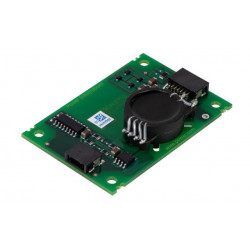
Leave a comment